Initial conditions
- Material to be machined: AISI-316l/EN14404.
- Part used: Bar Pre-drilled 236 mm outer diameter and 150 mm inside diameter.
- Machine used: Multiprocess turning center.
- Coolant used: Emulsion at 7%.
- Depth of cut conditions “ap” and feed per revolution “fn”: fixed by the manufacturer; ap= 0.4 mm – fn= 0.2 mm/Rev).
- Recommended optimal cutting speed (Vc): 290 m/min.
- Estimated tool life: 15 min with a tool wear of: 0.3 mm.
- End of tool life: Tool edge wear VB according to standard ANSI/ASME b 94.55 M – 1985.
- Wear measurement: Tool measuring machine Zoller Genius 3s
- Cutting tool: Finishing Operations (CNMG12-04 -08-MF2015) for stainless steel.
CONTROLLED VARIABLES
- Tool edge wear
- Tool life.
- Chip size.
Magnitudes used
- Working pressures: 8 and 80 bar.
- Fluid Flow: 15 l/min
- Cutting Speeds (Vc): 250, 290, 330 and 360 m/min
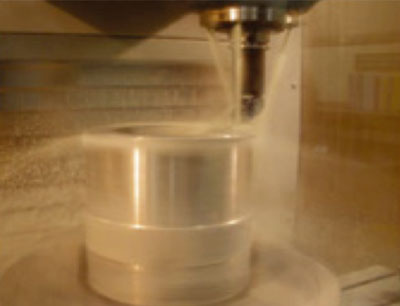
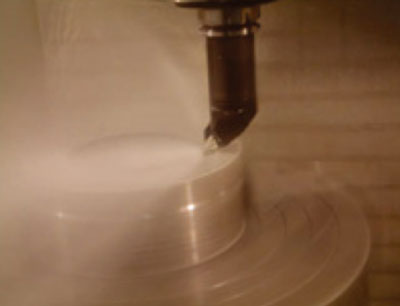
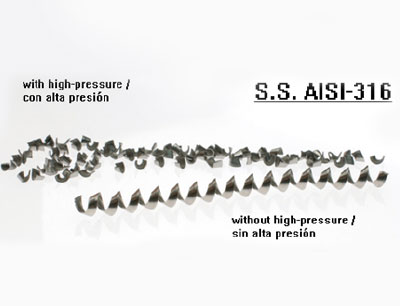
Results
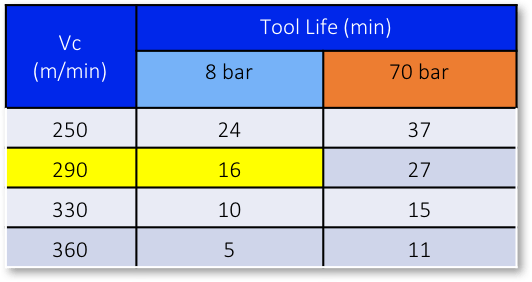
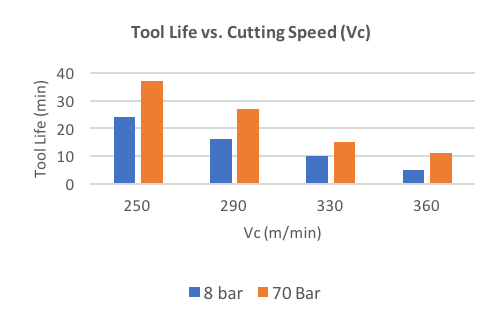
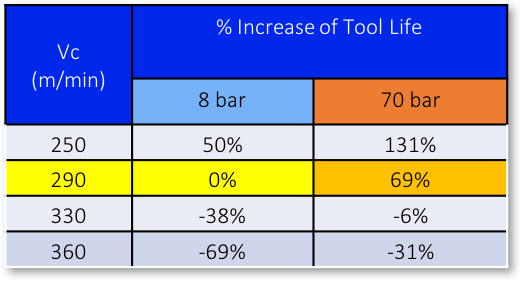

Conclusions (from 8 Bar to 80 Bar)
- The use of coolant at 80 bar pressure increases the lifespan of the tool by approx. 70%.
- The increase in cutting speed allows to increase productivity. The tool life is inversely proportional to that cutting speed.
- The effect of coolant at high-pressure reduces the size of the chips very significantly, greatly facilitating the evacuation from the cutting.
- The use of high-pressure refrigerant allows for better chip control, and in machines with tool changer avoids possible chip jamming that would decrease the reliability of unmanned production.
- The investment in a high-pressure system is amortized quickly, due to the reduction of costs in tools (increased tool life), higher cutting conditions with the consequent reduction in cycle time, better chip control which in turn allows for a more robust production process with fewer stops and avoiding possible marks on the surface of the machined parts.


